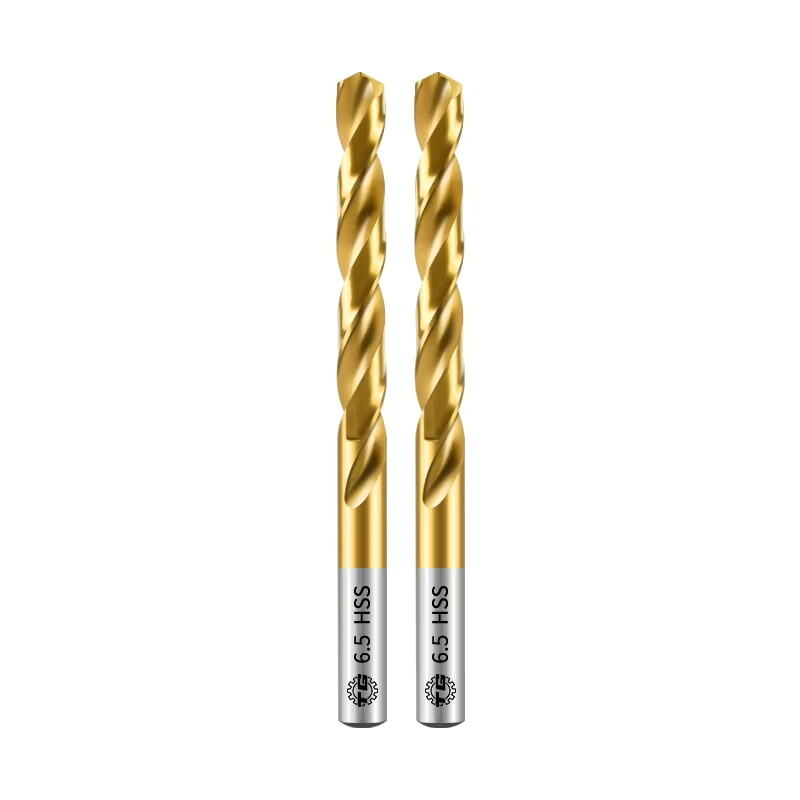فهم تأثير تقنية الكربيد المتقدمة على أداء الأدوات الصناعية
يبحث قطاع التصنيع باستمرار عن طرق لتحسين أداء الأدوات وزيادة طول عمرها، قضبان الكربيد المعدني المطحونة ظهرت كحلٍ مُغيّر للقواعد. لقد قدّمت هذه المكونات المُصممة بدقة ثورة في منهجيتنا لتحسين عمر الأدوات، حيث قدّمت متانة وموثوقية غير مسبوقة في مختلف التطبيقات الصناعية. ومن خلال دمج الكربيد الأسمنتي قضبان الكربيد المعدني المطحونة إلى أنظمة الأدوات ، يمكن للمصنّعين بشكل كبير تمديد فترات التشغيل بينما يحافظون على دقة القطع المتفوقة وجودة التشطيب السطحي.

العلم وراء قضبان الأسلاك المصنوعة من كربيد الأسمنت
تكوين المواد وخصائصها
تُصْنَع قضبان كربيد الأسمنت من خلال عملية متقدمة لتصنيع مساحيق المعادن، حيث تتحد جزيئات كربيد التنجستن مع مواد رابطة معدنية، عادةً الكوبالت. تؤدي هذه التركيبة الفريدة إلى توازن استثنائي بين الصلابة والمرونة. حيث يوفر كربيد التنجستن مقاومة ملحوظة للتآكل، في حين يضمن الرابط الكوبالتي توفر المطيلية الكافية لمنع الفشل الهش تحت الإجهاد. يتم التحكم بدقة في نسبة هذه المكونات لتحسين خصائص الأداء وفقًا للتطبيقات المحددة.
تتميز بنية قضبان كربيد السمنت المجروشة بوجود حبيبات كربيد موزعة بشكل متساوٍ داخل المصفوفة المعدنية، مما يُنشئ مادة تقاوم التشوه وتُحافظ على الثبات الأبعادي حتى في ظل الظروف القاسية. إن النزاهة الهيكلية لهذه المادة ضرورية للحفاظ على دقة الأداة والأداء على مدى فترات طويلة من الاستخدام.
تميّز في عملية التصنيع
يشمل إنتاج قضبان كربيد السمنت المجروشة عدة مراحل حرجة، كل منها تُسهم في جودة المنتج النهائي المتفوقة. بعد خلط المساحيق الأولي وعملية الضغط، تمر المواد بمرحلة التلبيد عند درجات حرارة مضبوطة بدقة. تُنتج هذه العملية بنية كثيفة ومتجانسة تشكّل الأساس في متانة القضيب. وبعد التلبيد، تمر القضبان بعمليات طحن دقيقة لتحقيق الأبعاد المطلوبة والانتهاء من سطح عالي الجودة.
تُضمن الإجراءات المتقدمة للتحكم في الجودة على طول عملية التصنيع الاتساق في خصائص المواد والدقة الأبعادية. يُنتج هذا الاهتمام بالتفاصيل قضبان كربيد معدنية مُلْبَنة تُوفّر أداءً موثوقًا وتساهم بشكل كبير في إطالة عمر الأدوات.
الفوائد الأداء في التطبيقات الصناعية
مقاومة التآكل المحسنة
يتمثّل أحد الأ advantages الرئيسية لقضبان كربيد التنجستن المُلْبَنة في مقاومتها الاستثنائية للتآكل والخدش. توفر الجسيمات الصلبة من الكربيد حماية متفوقة ضد التآكل الميكانيكي، في حين يمنع الطور الرابط حدوث فشل كارثي من خلال امتصاص توزيع قوى الصدمة. تسمح هذه المزايا مجتمعة للأدوات المزودة بقضبان كربيد التنجستن المُلْبَنة بالحفاظ على دقتها الأبعادية وكفاءة القطع لفترات أطول بكثير مقارنة بالمواد التقليدية.
في عمليات التشغيل عالية السرعة، حيث يكون ارتداء الأداة شديدًا بشكل خاص، تُظهر قضبان الكربيد المعدنية المطحونة عمرًا طويلًا ملحوظًا. إن قدرة المادة على تحمل درجات الحرارة المرتفعة دون فقدان خصائصها الميكانيكية تُسهم أيضًا في تمديد عمر الأداة في التطبيقات الصعبة.
الاستقرار الحراري والأداء
تلعب الخصائص الحرارية لقضبان الكربيد المعدنية المطحونة دورًا مهمًا في إطالة عمر الأداة. إن التوصيل الحراري الممتاز يساعد في تبديد الحرارة بسرعة أثناء التشغيل، مما يقلل من الإجهاد الحراري الواقع على الأداة وقطعة العمل. تمنع هذه القدرة على إدارة الحرارة فشل الأداة المبكر وتحافظ على أداء القطع المتسق على مدى فترات الإنتاج الطويلة.
بالإضافة إلى ذلك، يضمن معامل التمدد الحراري المنخفض للمادة الاستقرار الأبعادي على مدى واسع من درجات الحرارة، وهو أمر بالغ الأهمية للحفاظ على الدقة في عمليات التشغيل عالية السرعة. ويؤدي هذا الاستقرار بشكل مباشر إلى تحسين جودة القطع وتقليل الحاجة إلى تعديلات أو استبدال أدوات التشغيل.
التأثير الاقتصادي على عمليات التصنيع
تحليل التكلفة والفائدة
على الرغم من أن الاستثمار الأولي في قضبان كربيد السمنت قد يكون أعلى من الحلول التقليدية، إلا أن الفوائد الاقتصادية على المدى الطويل تكون كبيرة. حيث يؤدي العمر الافتراضي الطويل للأداة بشكل مباشر إلى تقليل تكرار الاستبدال، مما يخفض تكاليف المواد وأوقات التوقف الإنتاجية المرتبطة بتغيير الأدوات. وينتج عن هذه المتانة المحسنة تحقيق وفورات كبيرة في التكاليف على مدى عمر المعدات التشغيلي.
تشهد المنشآت التصنيعية التي تستخدم قضبان كربيد الأسمنت المطروقة تخفيضات كبيرة في مصروفات أدواتها السنوية، حيث تصل نسبة التوفير إلى 40٪ في بعض العمليات عند حساب التكلفة الإجمالية لملكية الأدوات. وتزداد هذه التوفيرات عندما تُؤخذ في الاعتبار تقليل أوقات توقف الماكينات وتحسين الكفاءة الإنتاجية.
تحسينات في الإنتاجية
إن استخدام قضبان كربيد الأسمنت المطروقة يمكّن العمليات التصنيعية من الحفاظ على سرعات قطع ونسب تغذية أعلى دون التأثير على عمر الأداة. وينتج عن هذه القدرة زيادة في الإنتاجية وجودة المخرجات، مما يخلق قيمة إضافية تتجاوز التوفير المباشر في التكاليف. كما أن تقليل تكرار تغيير الأدوات يسهم أيضًا في تحسين فعالية المعدات الشاملة (OEE) وتبسيط جداول الإنتاج.
Furthermore, the consistent performance of cemented carbide ground rods helps maintain product quality throughout the tool's life cycle, reducing scrap rates and rework requirements. This stability in machining operations translates into more predictable production schedules and better resource utilization.
التطورات المستقبلية والاتجاهات الصناعية
التقدم التكنولوجي
Ongoing research in cemented carbide technology continues to yield improvements in material properties and performance characteristics. New developments in powder metallurgy and coating technologies are expanding the capabilities of cemented carbide ground rods, promising even longer tool life and enhanced performance in increasingly demanding applications.
إن الابتكارات في تحسين حجم الحبيبات وتركيب المادة الرابطة تفتح إمكانيات جديدة لتخصيص قضبان كربيد التنغستن المعدنية المطحونة وفقًا للتطبيقات المحددة، مما يعزز بشكل أكبر مساهمتها في تمديد عمر الأدوات. هذه التطورات ذات صلة كبيرة بتقنيات التصنيع الناشئة وتحديات معالجة المواد.
اعتبارات الاستدامة
يتماشى التمديد في عمر الأدوات المقدّم بواسطة قضبان كربيد التنغستن المعدنية المطحونة مع التركيز المتزايد في الصناعة على الاستدامة وكفاءة استخدام الموارد. إذ تسهم هذه المكونات من خلال تقليل تكرار استبدال الأدوات وتقليل هدر المواد إلى الحد الأدنى، في ممارسات تصنيع أكثر وعيًا بالبيئة. كما يدعم متانة قضبان كربيد التنغستن المعدنية المطحونة الجهود المبذولة لتقليل استهلاك الطاقة والانبعاثات الكربونية في العمليات الصناعية.
إن قابلية إعادة تدوير مواد الكاربايد الأسمنتية تُحسّن مزيدًا من ملامحها البيئية، مع وجود عمليات مُثبتة لاستعادة وإعادة معالجة الأدوات المستعملة. إن هذا النهج الاقتصادي الدائري يصبح أكثر أهمية متزايدة حيث تسعى الشركات المصنعة إلى تحسين مصداقيتها من حيث الاستدامة.
الأسئلة الشائعة
ما الذي يجعل قضبان الكاربايد الأسمنتية أفضل من مواد الأدوات التقليدية؟
تقدم قضبان الكاربايد الأسمنتية مجموعة مثالية من الصلابة ومقاومة التآكل والمرونة تتفوق على مواد الأدوات التقليدية. إن تركيبها الفريد وعملية تصنيعها تؤدي إلى متانة استثنائية واستقرار أبعادي، مما يسهم في تمديد عمر الأداة بشكل كبير وتحسين الأداء في التشغيل الآلي.
كيف تؤثر قضبان الكاربايد الأسمنتية على سرعات التشغيل ومقادير التغذية؟
تسمح هذه المكونات بتحقيق سرعات تشغيل ومقادير تغذية أعلى مع الحفاظ على عمر الأداة ودقتها. إن مقاومتها الممتازة للتآكل والاستقرار الحراري العالي يمكّنان من استخدام معايير قطع أكثر عدوانية دون التأثير على عمر الأداة أو جودة القطعة.
ما هي ممارسات الصيانة التي تزيد من عمر الأدوات التي تحتوي على قضبان كربيد التنغستن المُلْبَنة؟
لزيادة عمر الأداة، احرص على استخدام معايير القطع المناسبة، وتأكد من التبريد الكافي أثناء التشغيل، واتبع إجراءات التعامل الموصى بها. كما يساهم الفحص المنتظم لأنماط التآكل وظروف التخزين المناسبة أيضًا في تحقيق الأداء الأمثل والمتانة الطويلة.
هل تعتبر قضبان كربيد التنغستن المُلْبَنة مناسبة لجميع تطبيقات التشغيل؟
على الرغم من أن قضبان كربيد التنغستن المُلْبَنة تتميز بأداء ممتاز في العديد من التطبيقات، إلا أن مناسبتها تعتمد على الظروف التشغيلية المحددة ومواد القطعة المراد تشغيلها ومتطلبات الأداء. يمكن استشارة الخبراء الفنيين لتحديد الدرجة والمواصفات المثلى للاستخدام في تطبيقات معينة.
جدول المحتويات
- فهم تأثير تقنية الكربيد المتقدمة على أداء الأدوات الصناعية
- العلم وراء قضبان الأسلاك المصنوعة من كربيد الأسمنت
- الفوائد الأداء في التطبيقات الصناعية
- التأثير الاقتصادي على عمليات التصنيع
- التطورات المستقبلية والاتجاهات الصناعية
-
الأسئلة الشائعة
- ما الذي يجعل قضبان الكاربايد الأسمنتية أفضل من مواد الأدوات التقليدية؟
- كيف تؤثر قضبان الكاربايد الأسمنتية على سرعات التشغيل ومقادير التغذية؟
- ما هي ممارسات الصيانة التي تزيد من عمر الأدوات التي تحتوي على قضبان كربيد التنغستن المُلْبَنة؟
- هل تعتبر قضبان كربيد التنغستن المُلْبَنة مناسبة لجميع تطبيقات التشغيل؟


